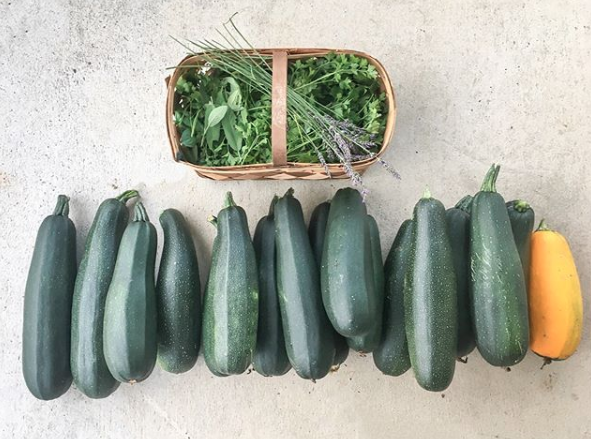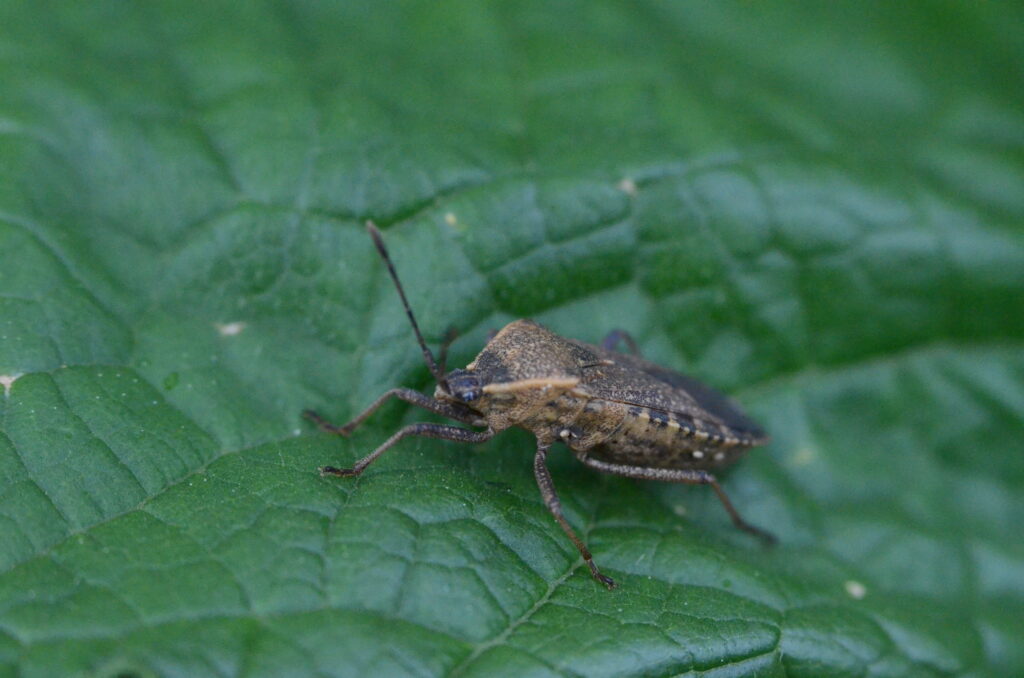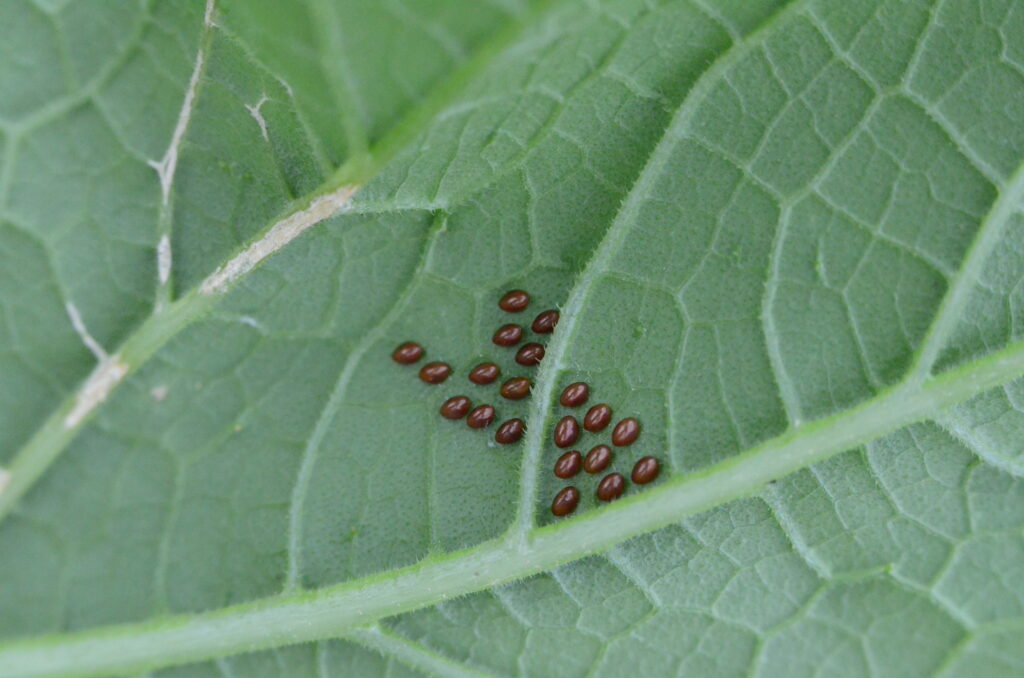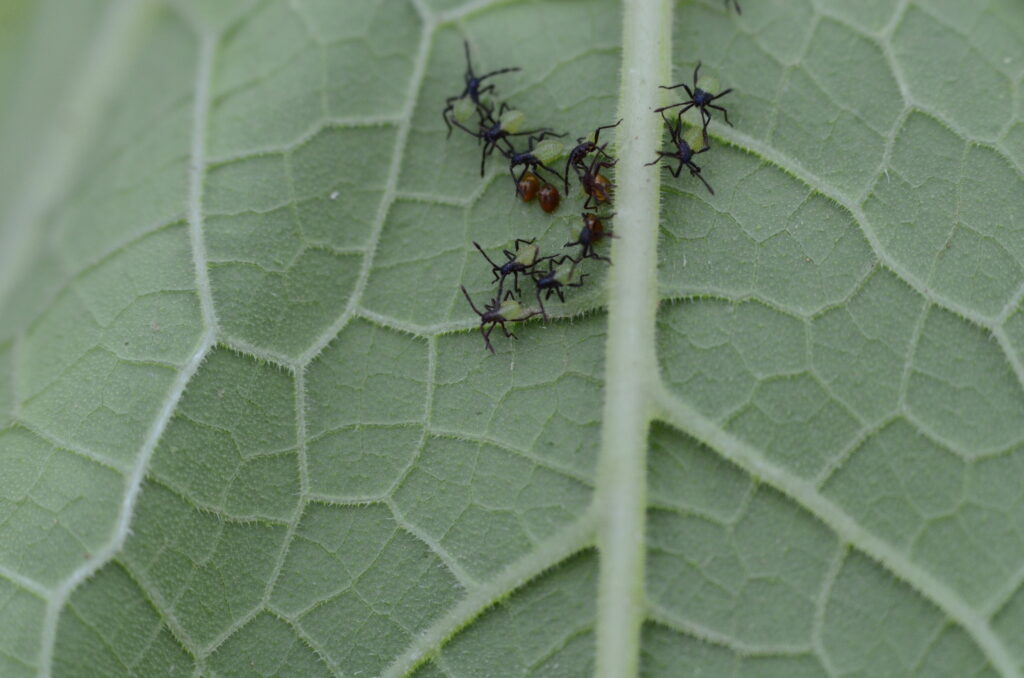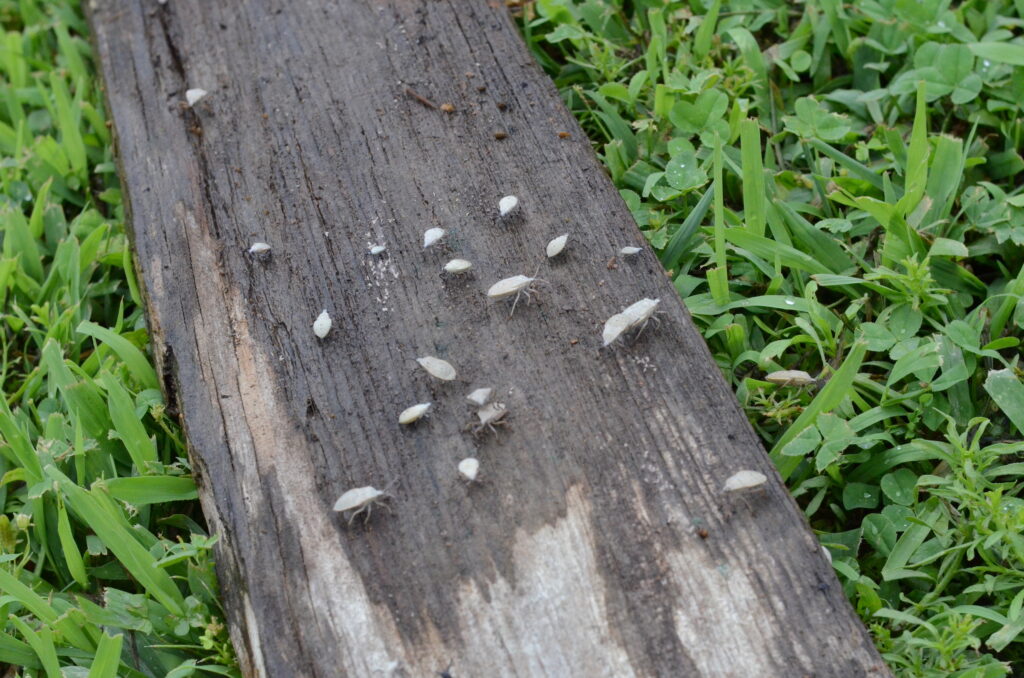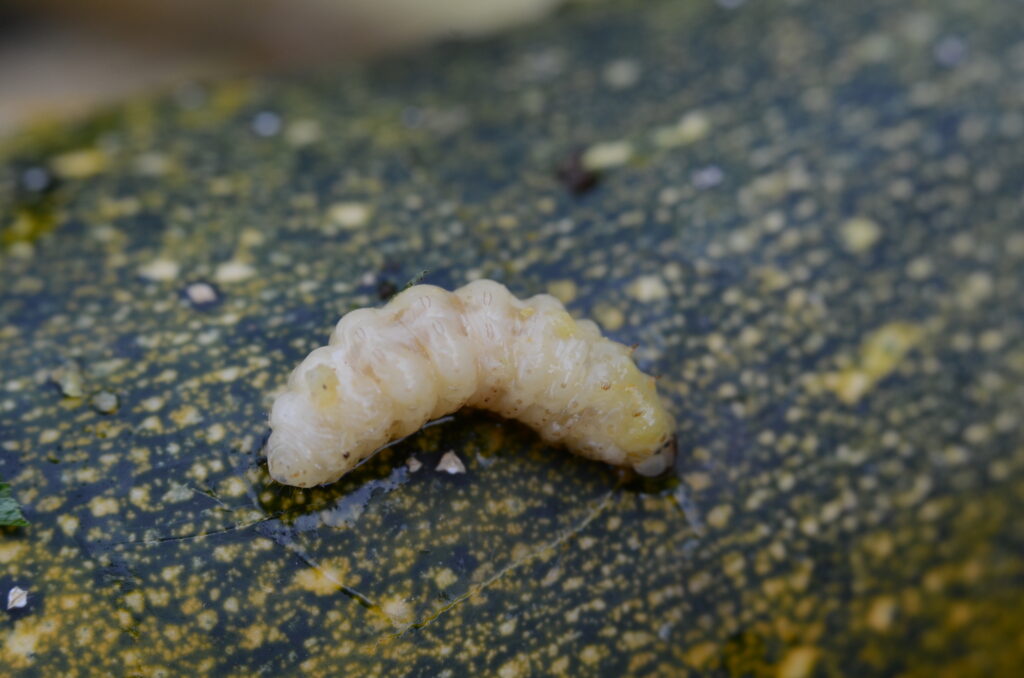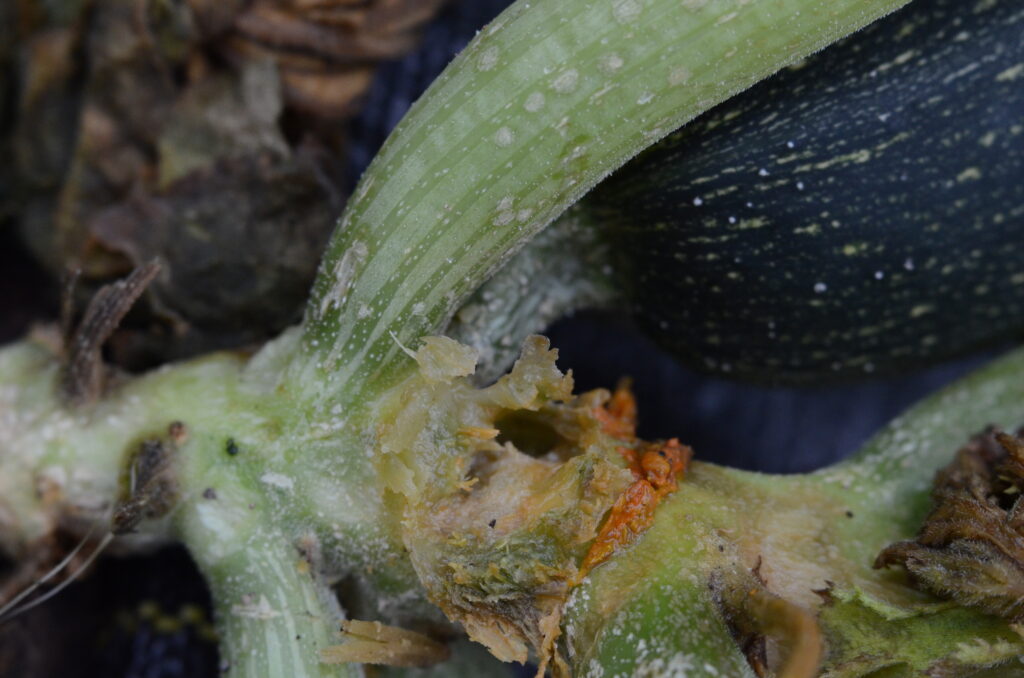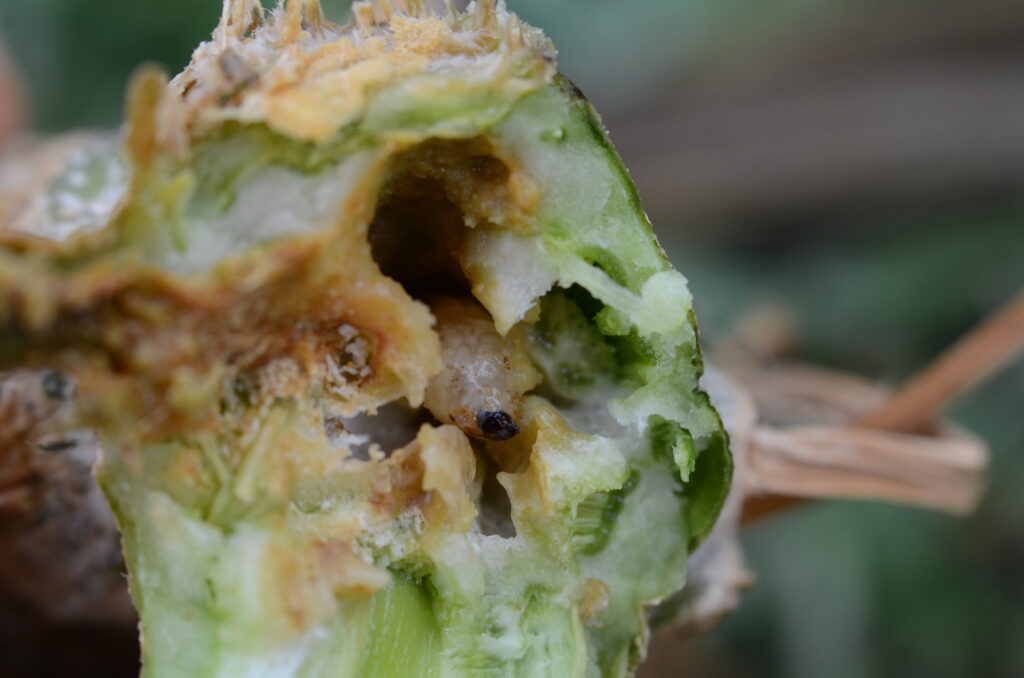Tips to Help Prevent Squash Pests
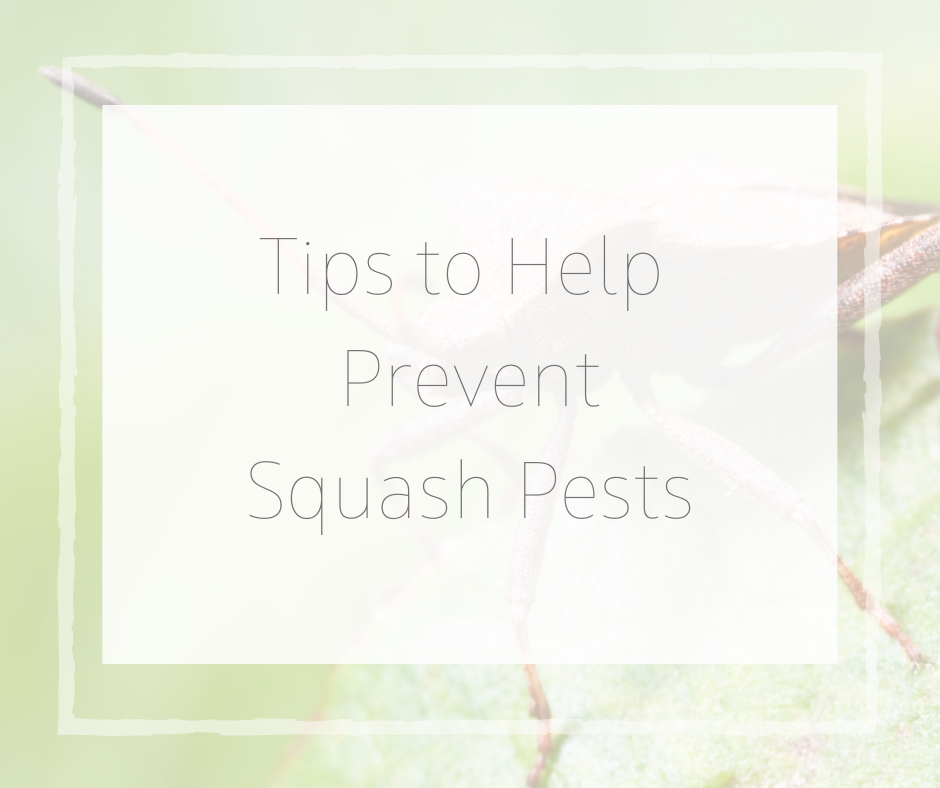
If you’ve ever planted squash, zucchini, or other vine plants, you probably have faced one, if not both, of these common types of pests, the squash bug and the Larvae Borer (a type of grub) that can kill your plant. I personally do all I can to avoid the use of chemicals/pesticides in my garden to protect my pollinators which are a huge benefit to plant life in your garden. So, if you are choosing to go this route as well, here are some tips I have found to be beneficial to help prevent Squash damage from these pesky pests. First, how to tell if your plant(s) have been affected.
 This year’s squash from early Summer
This year’s squash from early Summer
Signs Your Squash Has Been Infected.
- The Squash Vine Wilts (Not due to the heat of the sun)
- Squash is spongy and has a yellow saw-dust-like appearance at the base.
Difference Between Squash Bug and Squash Bore
Squash Bug
– Related to Stinkbug Family (Often mistaken for the stinkbug)
– Grayish/Brown
– Will suck juices/sap right out of the squash leaves and cause yellow leaves that will soon wilt.
– Found on vines and base of plants or mulch (if you mulch)
– Lay their eggs underneath the squash leaf where the veins are. (very difficult to remove)
– Visible on the plant
 Early Detection is the key! The sooner you can catch these bugs and destroy their eggs the better.
Early Detection is the key! The sooner you can catch these bugs and destroy their eggs the better.
Ways to destroy bugs and eggs:
> Prevention Tips
- Pick adult bugs off the plant in the morning and put them in soapy water or if you have chickens, feed to the chickens (the bottom of your shoe works well too).
- Adding an old board/cardboard around your plants can also help this. Check underneath your board in the mornings where these bugs will go and be sluggish. I have noticed more bugs under this board after a nice rain. ( They love to lay under items )
- Eggs can be removed by scraping them gently off the leaf with a butter knife/plastic knife, fingernail, or duck tape. Bugs will lay eggs daily and takes 1-2 weeks to hatch
Squash Larve Borer (grub)
– Lay eggs at the base of the plant, brown.
– The Larvae is a white, wrinkly ribbed body with a black-colored head about an inch long.
– The larvae chew themselves into the squash stem and eat the plant from the inside out.
– Causes Vine Wilt Overnight
– Look for Larve Feces and chewed-up stem degree (looks like yellow dust – Frass)
– Stem/Base of the Squash plant looks yellow and spongy
>Prevention Tips
- Like the Squash Bug, the sooner you can remove the eggs, the better. Eggs are near the base of the plant.
- Remove the Borer as soon as possible (See Video Below); cut a slit with a box cutter knife or X-Acto knife and take forceps or tweezers to remove it. There may be up to three borers inside, depending on how much yellow waste you see near the base.
- You may be able to save the plant if the plant is healthy. Cover the slit area with moist soil, and new roots may come back. However, if the grubs did so much damage to the plant, the plant will not recover.
- You can also inject (rather than spray) BT directly into the stem (safe for humans and animals but can kill some insects). I personally have never done this.
Additional Tips:
– Plant your squash early (after the last frost, though), if possible, before the Summer attack of these pests. Plant at least three plants or extra for “insurance” against the threat of pests. I always plant about eight, which gives me more than enough squash. Squash usually is about finished by the time the borer and bugs infect them.
– Crop Rotation: make sure to plant your squash in a different location rather than the same twice in a row.
– As soon as the squash is finished, dispose of the plant away from other vines and your general garden vicinity.
– Another method is to plant later in the Summer, but be sure to check your fall frost date, so the plant has time to produce.
I truly hope these tips will help you to have healthier squash plants and squash without the use of pesticides. If you have more tips and nuggets of wisdom to share with us on how to battle these pests, we would love to hear from you! Share with us in the comments below.
Thank you for visiting Brewing Wisdom and as always, keep going and keep growing!
This post contains affiliate links. This means when you click on a link and make a purchase we will receive a small commission. Thank you for your support!

